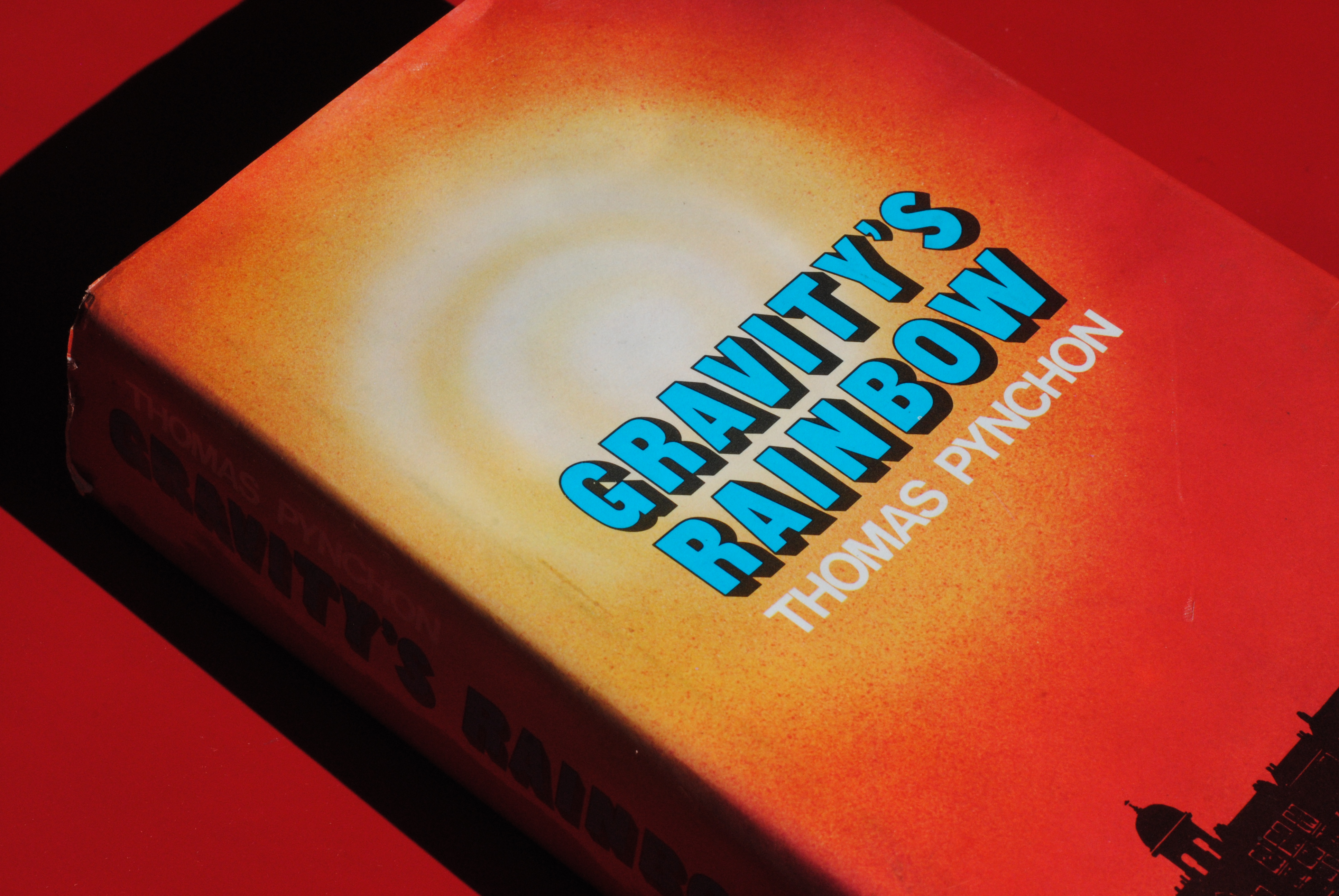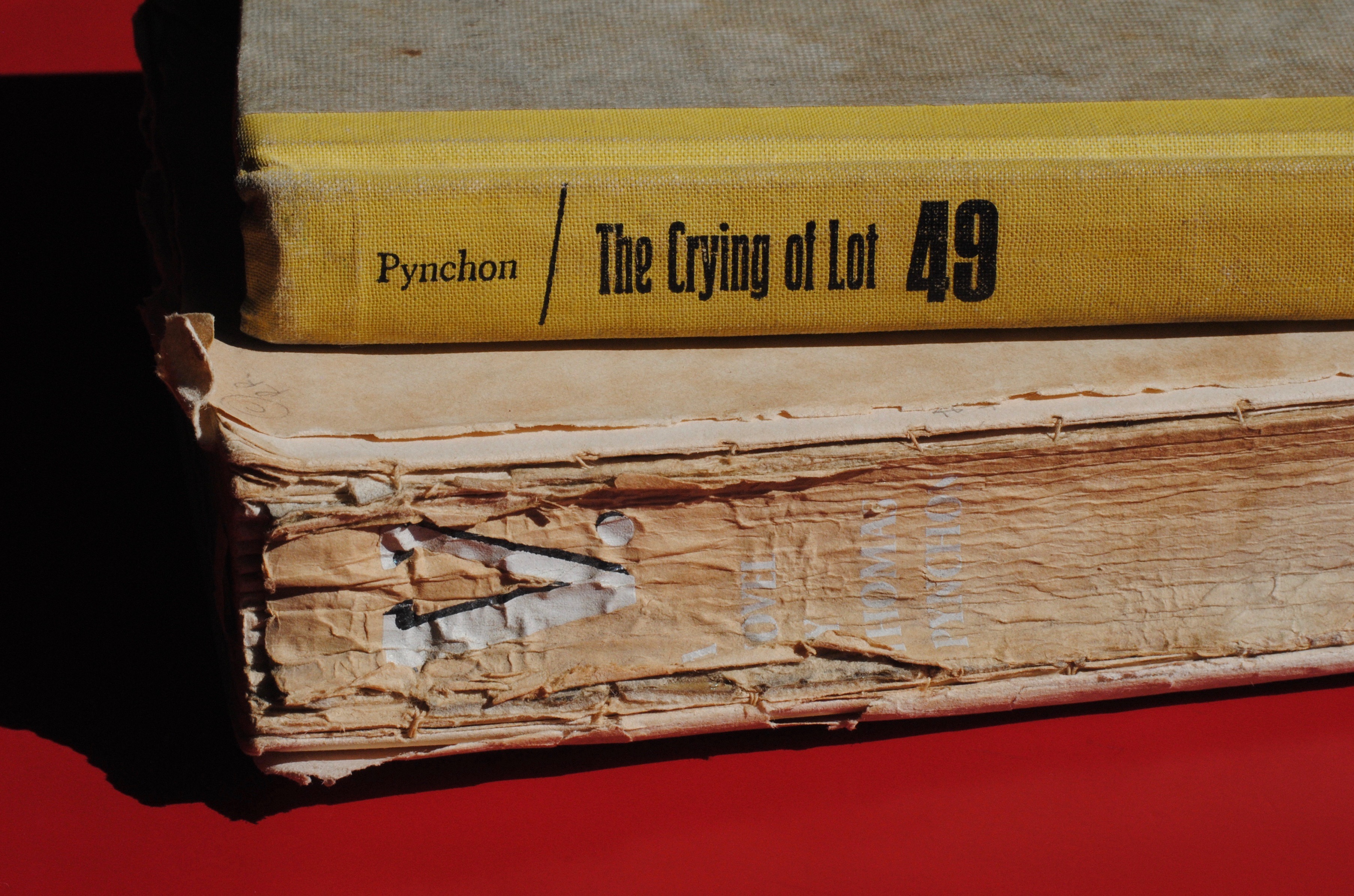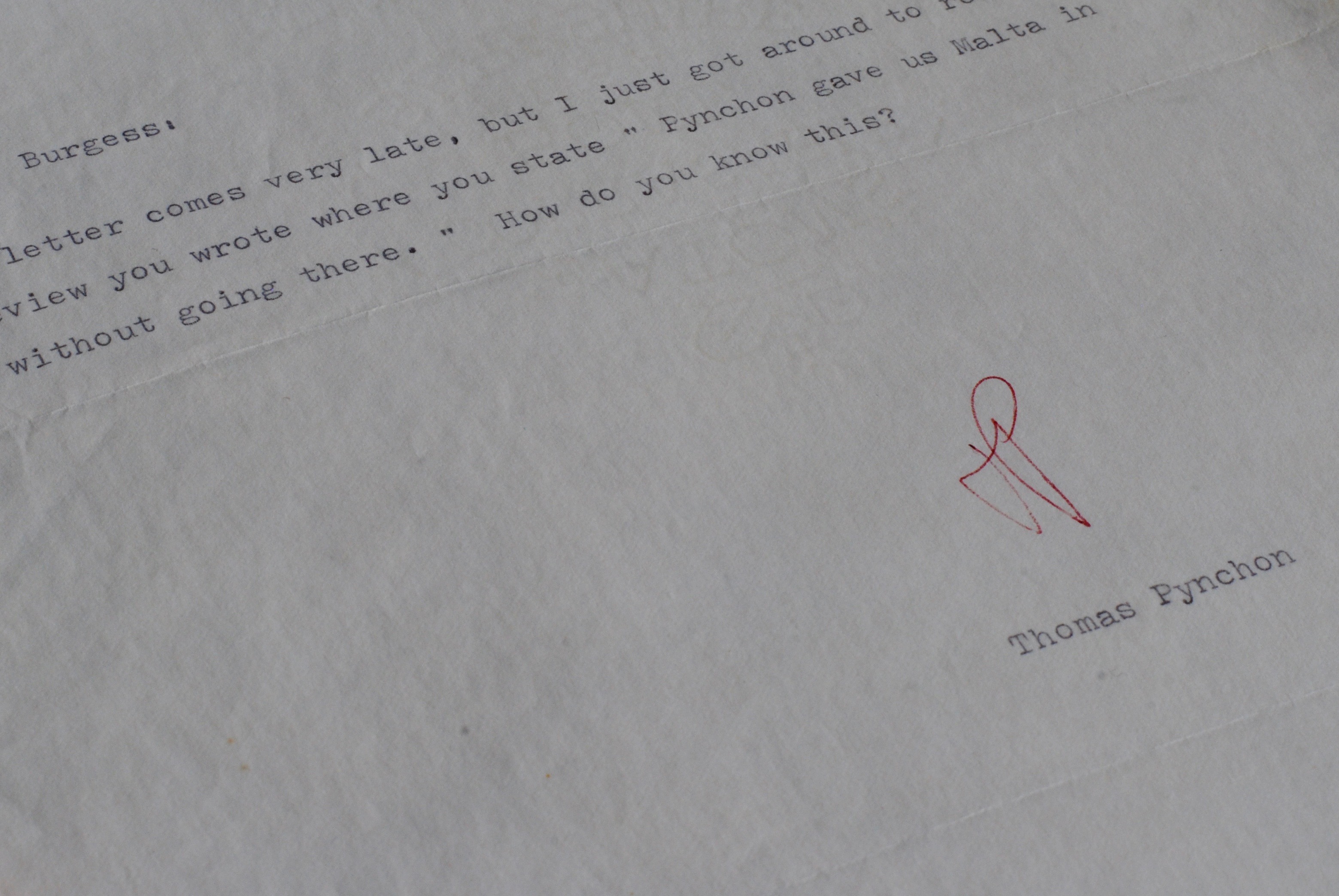Object of the Week: Pynchonalia
-
Graham Foster
- 8th May 2017
-
category
- Object of the Week

The archive at the International Anthony Burgess Foundation contains several objects relating to the work of American novelist Thomas Pynchon. Burgess has a similar artistic vision to Pynchon, despite their different backgrounds and literary influences. Both writers prefer their subject matter to stretch beyond the borders of their home countries, and both experiment with forms of literary expression. Pynchon’s first novel V. (1963) alone, takes place in America, Egypt, South-West Africa, Italy and Malta. Burgess has written similarly cosmopolitan novels.
Burgess reviewed Pynchon’s books throughout his life, and wrote that V. is ‘a remarkable epic fantasy’ that possesses a ‘love-hate attitude […] towards America’. His review of Gravity’s Rainbow (1973) states it ‘has a gravity more compelling than the rainbow technique (high colour, symbolism, prose tricks) would seem to imply.’ That Burgess writes this is no surprise, as much of Burgess’s fiction blends high literature and cerebral ideas with word games, jokes and other entertainment.

In 1963 Burgess met Liliana Macellari Johnson, who would eventually become his second wife. At the time of their first meeting, she had already begun work on translating V. into Italian, and would go on to translate The Crying of Lot 49 (1965). The copies Liana used to undertake this work (pictured above) remain in the archive of the Burgess Foundation, and show her hand-written annotations. The Crying of Lot 49, a rare first edition with embossed muted post horns on the front cover, has a typed sheet which shows Liana’s work translating the novel’s songs (pictured below).

Burgess’s library contains several copies of Pynchon’s novels, including an American first edition of Gravity’s Rainbow, multiple copies of V., The Crying of Lot 49, and Vineland (1990). The copy of Gravity’s Rainbow has a rare printing error in which the first 100 pages are replicated in place of the final 100 pages. There is no second copy of the novel in the archive, suggesting that Burgess never made it through the whole book.

Burgess was clearly impressed with Pynchon’s fiction, and there is evidence that it influenced his own work, and vice versa. Burgess’s novel MF (1971) shows Burgess processing some of Pynchon’s techniques, with Burgess writing that France ‘has had to watch structuralism germinating in the American work of Thomas Pynchon and the British work of your humble servant’. Burgess goes on to write that MF is ‘based sedulously on the doctrines of Lèvi-Strauss’, something which is apparent in Pynchon’s work, particularly with the mysterious ending of The Crying of Lot 49.

The archive contains one piece of correspondence between Pynchon and Burgess. In an undated letter Pynchon responds to Burgess’s claim that in V. ‘Pynchon gives us Malta without having been there’ by asking ‘How do you know this?’ It is likely that he was reacting to Burgess’s 1973 interview in the Paris Review, in which Burgess says, ‘Probably (as Thomas Pynchon never went to Valletta or Kafka to America) it’s best to imagine your own foreign country’.



